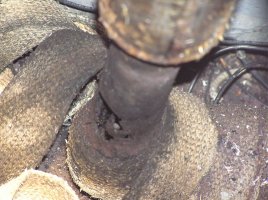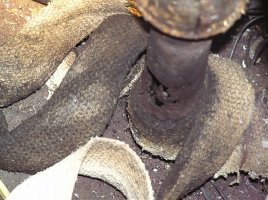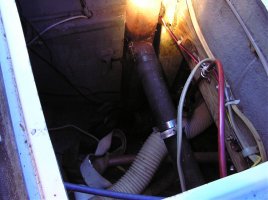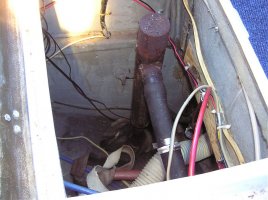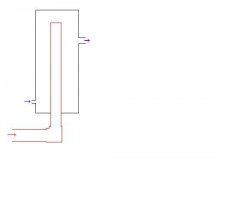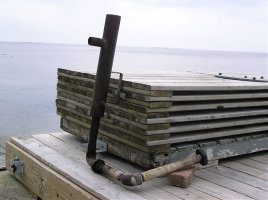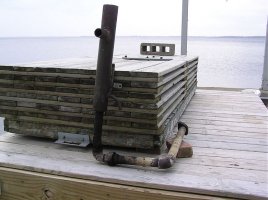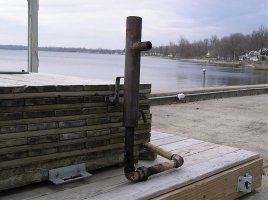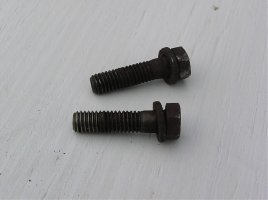ron7546
Member II
I have had fumes in my E27 since buying the boat last fall even though the previous owner installed a crankcase ventilator.The boat being wrapped and the weather being in the 50`s-60`s in northern N.Y. I just dug into the muffler system. If I can get the photos to take,perhaps someone can tell me what I have here other than a hole in the pipe leading from the manifold to the very bottom of the muffler.Does this look original ? ? ( 1976 ) In anticipation of spring disassembly I have been soaking all fasteners with that"blaster" stuff about once a week.Don Moyer tells me one option is,If I can get the system out in one piece,to take it to a welding-fabrication shop and have it repaired.Any input would be greatly appreciated.
Thanks,
Ron
'Bluenote"
Thanks,
Ron
'Bluenote"

